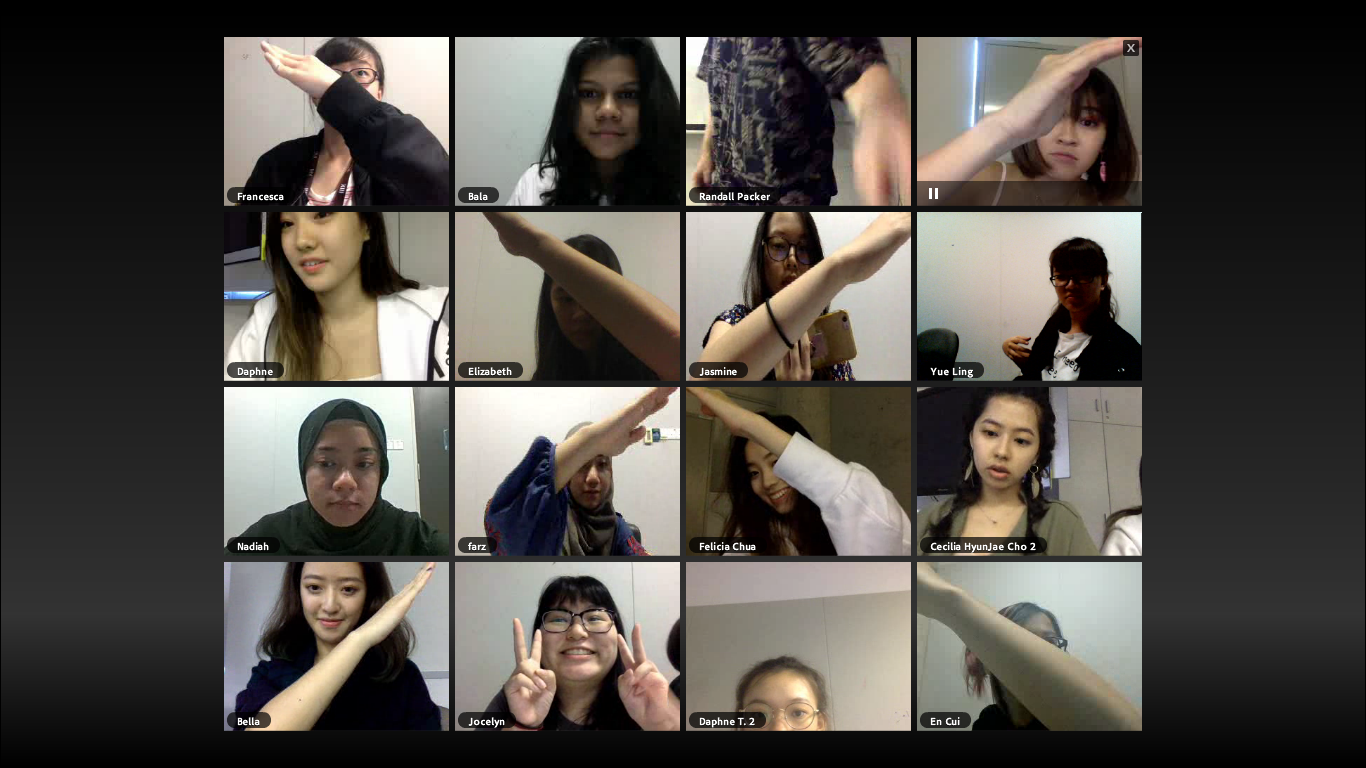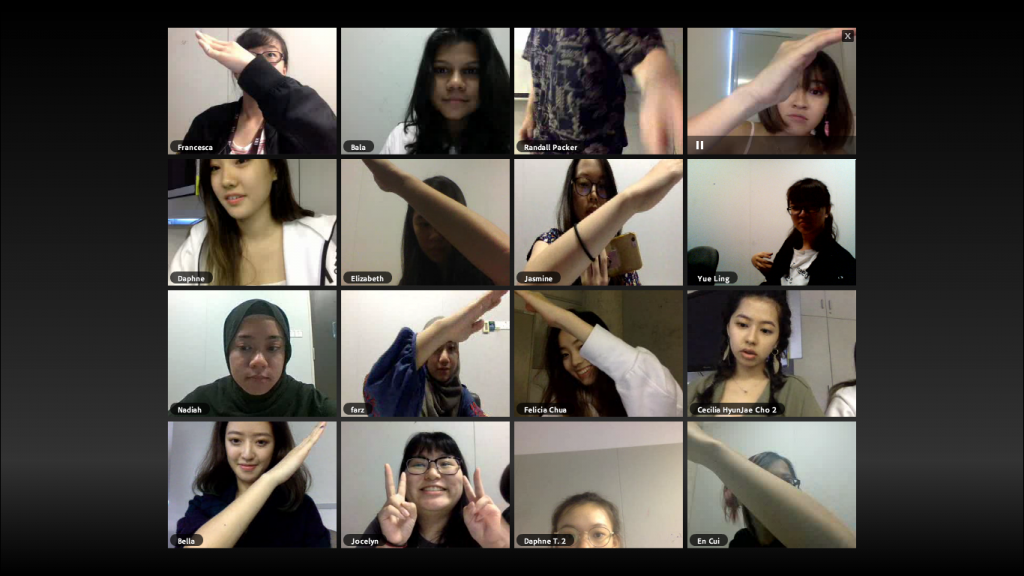[ On S O C I A L B R O A D C A S T I N G ]
|| In Angry Women (2013) by Annie Abrahams, female participants had their webcam screens lined up in a 4×3 grid and vocalised their anger in front of the camera. This entire project involved 24 participants, and none of them knew each other.
Having previously done a research critique on The Big Kiss by Annie Abrahams, I was really interested to see what Angry Women was all about.
Watching this video was pretty unsettling for me, and probably to others too and there’s a reason why.
When on social media, we send messages out to our friends, coupled with emotions embedded in our messages. Sometimes, it is also broadcasted to the public, not just our friends. Either way, we are likely to curate an image of ourselves online via these multimodal messages, and more often than not, create an idealised version of ourselves.
The emotion of anger is seen as a rather negative emotion since it implies conflict between two or more parties. Following this understanding, it is only logical to conceal our angry sides online. Now this may seem a bit contradictory to the proliferation of rants in online posts, but is definitely different in the sense that we are still somewhat hiding behind anonymity and not showing our faces, which also partially equate to our real identity.
In Angry Women, these participants were strangers but had to reveal their faces to each other, leading to them being a little cautious at the start.
” It was tough and courageous, but we are moving on 🙂 – very interesting and tumultuous.
We are still struggling to express our anger and we also still have difficulties to co-construct in this situation of lonely togetherness. It’s exciting and sometimes overwhelming to try to transgress one’s limits.”
– from http://bram.org/angry/women/
In fact, research has shown that people regularly suppress anger in order to maintain healthy and successful social relationships. [1] Only by being in this space curated by Annie Abrahams under a ‘No Exit’ situation could they take some time to fully unleash their fury (much like She Hulk transformations, which is terrifying to watch).

” So instead of dwelling on the frustrations of the network connection, she finds inspiration, and perhaps more importantly, she sets up compelling situations that allow her and others to make critical observations about connection and disconnection. “
– Randall Packer
Since Annie Abrahams has a background in biology, she uses social broadcasting as a tool for investigating and testing out hypotheses that she forms about human behaviour. In Angry Women, the 4×3 grid is a curated ‘Alone Together’ [3] setting whereby participants are able to see each other all at once over the ‘Third Space’ (as coined by Randall Packer), and since it is a continuous take, they have to deal with the situation of “No Exit”, where they are forced to reveal unglamorous sides of themselves that they would normally unconsciously avoid doing so to others. [4] This social situation would not be possible without the aid of technology and social broadcasting capabilities.
Perhaps by learning how to embrace our ‘sloppy’ sides online, this could transform parasocial relationships into much more genuine ones in the future.
Resources:
[1] Riet, Jonathan Van’T, Gabi Schaap, and Mariska Kleemans. “Fret Not Thyself: The Persuasive Effect of Anger Expression and the Role of Perceived Appropriateness.” Motivation and Emotion42, no. 1 (2017): 103-17. doi:10.1007/s11031-017-9661-3.
[2] Randall Packer, Disentangling the Entanglements, Art of the Networked Practice Online Symposium Website
[3] Turkle, Sherry. Alone Together: Why We Expect More from Technology and Less from Each Other. New York: Basic Books, 2017.
[4] Annie Abrahams website: http://bram.org/angry/women/






